Text
Nar Phu Trek
The Nar Phu Trek is a hidden gem in the Annapurna region of Nepal, offering a unique and off-the-beaten-path trekking experience. Starting from the village of Koto, the trek takes you through remote valleys, ancient villages, and rugged mountain landscapes, providing a glimpse into the traditional way of life of the Nar and Phu ethnic groups.
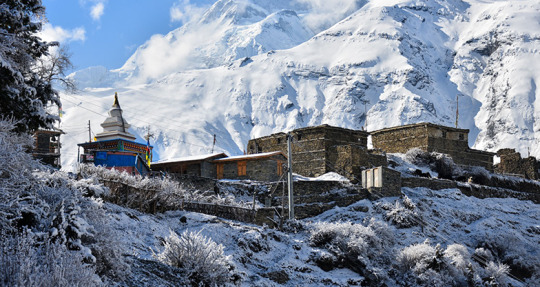
One of the highlights of the Nar Phu Trek is reaching the remote villages of Nar and Phu, which are situated in a secluded valley near the Tibetan border. These villages are home to the indigenous people of the region, who maintain a traditional way of life that has remained largely unchanged for centuries. Trekkers have the opportunity to interact with the locals, learn about their customs and culture, and witness traditional ceremonies and rituals.
The trek also offers stunning views of snow-capped peaks, including Himlung Himal, Kang Guru, and Pisang Peak, as well as opportunities to explore ancient monasteries, chortens, and Buddhist shrines along the way. The pristine natural beauty of the Nar Phu Valley, with its alpine meadows, turquoise lakes, and towering cliffs, provides a breathtaking backdrop for the entire journey.
Unlike some of the more popular treks in the Annapurna region, the Nar Phu Trek is less crowded and offers a more peaceful and immersive experience in the Himalayan wilderness. Accommodation options along the trek range from basic teahouses to more comfortable lodges, providing a cozy and welcoming atmosphere for trekkers.
Overall, the Nar Phu Trek is a rewarding and unforgettable journey that combines cultural immersion, natural beauty, and outdoor adventure in one of the most remote and untouched corners of Nepal. Whether you're a seasoned trekker looking for a new challenge or a first-time visitor to the Himalayas, the Nar Phu Trek promises an experience you'll cherish for a lifetime.
#Nar Phu Trek#Trekking in Nepal#Nar Phu Valley#himalayanadventure#trekking adventure#Annapurna Region
0 notes
Text
Everest Expedition
Mount Everest, the tallest peak on Earth, has long captivated the human spirit with its majestic allure. The endeavor to conquer its towering heights represents the pinnacle of human ambition and determination. Each year, intrepid adventurers from around the globe set their sights on this legendary summit, ready to test their mettle against the formidable challenges that lie ahead.

The journey to Everest's summit begins with meticulous planning and preparation. Teams of experienced climbers assemble, meticulously reviewing equipment, provisions, and routes. Every detail is scrutinized, from the choice of gear to the timing of the ascent, as the climbers ready themselves for the arduous task that lies ahead.
As the expedition sets out from base camp, the air is filled with a palpable sense of anticipation and excitement. The climbers navigate treacherous terrain, traversing icy glaciers and rocky crevasses with steely determination. Each step brings them closer to their ultimate goal, but also closer to the unforgiving forces of nature that await them at higher altitudes.
Acclimatization becomes paramount as the climbers ascend ever higher into the thinning air. They pause at strategically placed camps along the route, allowing their bodies to adjust to the extreme altitude. Each day brings new challenges, from bone-chilling cold to howling winds that threaten to sweep them off the mountain's face.
Despite the daunting obstacles they face, the climbers press onward, driven by a shared sense of purpose and camaraderie. With each passing day, the summit looms ever closer, a beacon of hope and triumph against the odds.
Finally, after days of grueling effort and unwavering determination, the climbers reach the fabled summit of Everest. Standing atop the world, they are greeted by a breathtaking panorama of snow-capped peaks stretching out as far as the eye can see. In that moment, all thoughts of hardship and fatigue fade away, replaced by an overwhelming sense of awe and accomplishment.
But the journey is far from over. Descending from the summit poses its own set of challenges, as the climbers navigate treacherous terrain and unpredictable weather conditions. Yet, with their spirits buoyed by their triumph, they persevere, each step bringing them closer to the safety of base camp and the comforts of home.
The Everest expedition is not merely a physical feat, but a testament to the indomitable human spirit. It is a reminder of what we can achieve when we push ourselves beyond our limits and dare to dream the impossible. And as each new expedition sets out to conquer the world's tallest peak, Everest continues to inspire and awe, beckoning adventurers to test their courage and resolve against its formidable heights.
0 notes
Text
Yala Peak Climbing
In the towering peaks of the Langtang region in Nepal, Yala Peak stands as a majestic sentinel, reaching an altitude of 5,732 meters above sea level. Its rugged beauty and challenging terrain attract adventurers from around the world, each eager to test their skills against its formidable slopes.
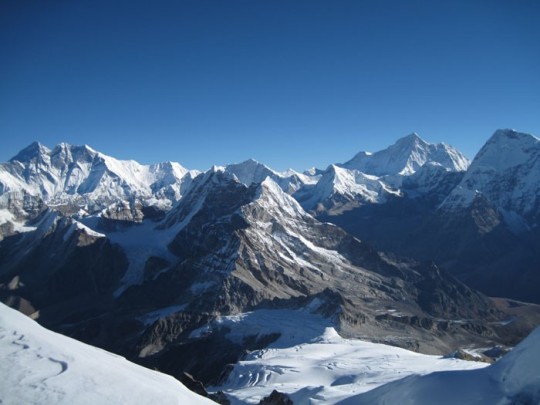
Recently, a group of intrepid climbers set their sights on Yala Peak, determined to add this iconic summit to their list of conquests. Their journey began with meticulous planning and thorough preparation, as they gathered their gear and mapped out their route. Each member of the team brought with them a wealth of experience and a burning passion for high-altitude adventure.
The expedition commenced with a trek through the breathtaking landscapes of the Langtang Valley, traversing lush forests and crossing roaring rivers. Despite the demanding conditions, the team pressed onward, fueled by their shared ambition and unwavering determination.
As they ascended higher into the thin air of the Himalayas, the magnitude of their challenge became increasingly apparent. Battling fatigue and altitude sickness, the climbers faced constant obstacles. Yet, they remained undeterred, drawing strength from their camaraderie and the sheer force of their determination.
Slowly but steadily, they made their way towards the summit, navigating steep ridges and icy slopes with caution and skill. With unwavering perseverance, they overcame obstacles that seemed insurmountable, pushing themselves beyond their limits in pursuit of their goal.
Finally, after days of relentless effort, they stood triumphant on the summit of Yala Peak, gazing out at the breathtaking panorama spread out before them. In that moment of triumph, the challenges they had faced along the way faded into insignificance, replaced by an overwhelming sense of achievement.
Their descent proved to be no less demanding than their ascent, as they carefully made their way back down the mountain, navigating treacherous terrain with caution and precision. But with each step downward, they drew nearer to safety, their spirits buoyed by the knowledge that they had conquered one of the Himalayas' most iconic peaks.
As they returned to base camp, weary but jubilant, the climbers reflected on their journey with a profound sense of pride and satisfaction. For them, Yala Peak had been more than just a mountain – it had been a test of their courage, resilience, and unwavering determination.
In the end, the Yala Peak climbing expedition stood as a testament to the indomitable human spirit and its capacity to overcome even the most daunting of challenges. As the team made their way back to civilization, they carried with them memories that would last a lifetime, along with a profound sense of accomplishment.
#Yala Peak#peakclimbing#Peak Climbing in Nepal#Yala Peak Climbing#himalayas#mountainviews#adventuretravel#nepal#mountaineering#outdooradventure#explorenepal
0 notes
Text
Everest Base Camp Trek
Everest Base Camp Trek is a classic trekking adventure in the foothills of the world’s highest mountain, Mount Everest. Trudging along the rugged trails of the Himalayas, decorated with mountains and landscapes, this trek is undoubtedly one of the best walks on earth.
#everest base camp trek#everest base camp#trekking in nepal#himalayas#adventuretravel#mountainviews#explorenepal#outdooradventure#nepal#trekkingadventure
0 notes
Text
Mountaineering in Nepal
Mountaineering in Nepal is an unparalleled adventure that beckons adventurers from around the globe to challenge themselves amidst the towering peaks of the Himalayas. Renowned as the ultimate mountaineering destination, Nepal offers a plethora of opportunities for climbers of all skill levels, from novice trekkers to seasoned alpinists.
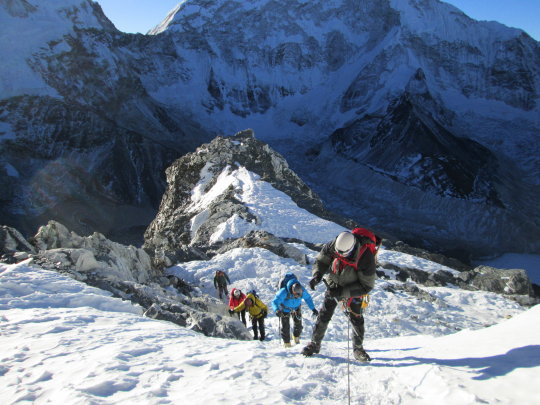
At the heart of Nepal's mountaineering scene lies the world's highest peak, Mount Everest. Standing tall at 8,848 meters (29,029 feet), Everest has captured the imagination of climbers for decades, drawing them to its formidable slopes in pursuit of the ultimate mountaineering challenge. Climbing Everest is a grueling endeavor that requires months of preparation, physical fitness, and mental fortitude. Expeditions typically begin in the bustling town of Lukla, from where climbers trek through the Khumbu Valley, acclimatizing to the altitude and preparing for the ascent. The climb itself is a test of endurance, with climbers navigating treacherous icefalls, crevasses, and high-altitude conditions before reaching the summit. Despite the challenges, standing on the top of the world is an unparalleled experience that remains the pinnacle of mountaineering achievement.
Beyond Everest, Nepal boasts a plethora of other peaks that offer equally thrilling mountaineering opportunities. The Annapurna and Manaslu regions are home to a multitude of majestic peaks, including Annapurna I, the 10th highest mountain in the world, and Manaslu, the eighth highest. These peaks attract climbers seeking to test their skills on challenging terrain while soaking in the breathtaking beauty of the surrounding landscapes. Other popular mountaineering destinations in Nepal include the Langtang, Makalu, and Kangchenjunga regions, each offering a unique blend of adventure and exploration.
For those new to mountaineering, Nepal offers a range of training courses and guided expeditions designed to introduce climbers to the basics of alpine climbing. These courses typically cover essential skills such as rope handling, glacier travel, and avalanche awareness, providing participants with the knowledge and confidence to tackle more challenging peaks in the future. With the guidance of experienced mountaineering guides and support staff, climbers can safely navigate Nepal's rugged terrain and reach new heights in their alpine pursuits.
In addition to its natural beauty and challenging peaks, Nepal is also renowned for its warm hospitality and rich cultural heritage. Climbers have the opportunity to immerse themselves in the vibrant culture of the Sherpa and Tibetan people, who have inhabited the Himalayan region for centuries. Along the way, climbers can visit ancient monasteries, attend traditional festivals, and learn about the customs and traditions of the local communities, adding depth and meaning to their mountaineering experience.
In conclusion, mountaineering in Nepal offers adventurers an unparalleled opportunity to test their skills, challenge their limits, and experience the awe-inspiring beauty of the Himalayas. Whether climbing Everest or exploring lesser-known peaks, Nepal promises an unforgettable adventure that will leave a lasting impression on all who dare to venture into its majestic mountains.
#mountaineering#mountaineering in Nepal#himalayas#adventuretravel#mountainviews#explorenepal#nepal#mountainclimbing#mountaineers
0 notes
Text
Mardi Himal Trek
https://www.nepalsocialtreks.com/trip/mardi-himal-trek/
#himalayas#mardihimaltrek#mardihimal#adventuretravel#outdooradventure#explorenepal#mountainviews#trekkingadventure#trekkinginnepal
0 notes
Text
Manaslu Circuit Trek
https://www.nepalsocialtreks.com/trip/manaslu-circuit-trek/
0 notes
Text
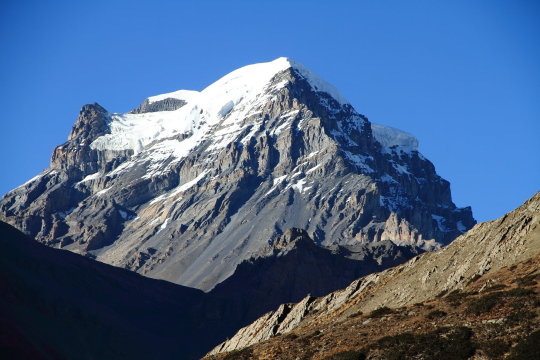
Chulu West Peak
https://www.nepalsocialtreks.com/trip/chulu-west-peak-climbing/
#himalayas#adventure#adventuretravel#mountainviews#outdooradventure#explorenepal#mountaineering#nepal#nature#Chulu West Peak#Chulu peak Climbing#peakclimbing
0 notes
Text

https://www.nepalsocialtreks.com/trip/mera-peak-climbing/
In the heart of the Nepalese Himalayas lies a challenge waiting to be conquered: Mera Peak. Rising to an impressive altitude of 6,476 meters (21,247 feet), Mera Peak offers adventurers an exhilarating and unforgettable climbing experience. Let's delve into the journey of ascending this majestic peak, from preparation to summit, and discover the allure that draws climbers from around the world.
#himalayas#adventure#adventuretravel#mountainviews#outdooradventure#explorenepal#mountaineering#nepal#mera peak climbing
0 notes
Text
AmaDablam Expedition
AmaDablam, also known as "Mother's necklace" in the Sherpa language, a mountain peak located in the Everest region of Nepal, is a popular destination for mountaineers and adventure seekers. The mountain stands at an elevation of 6,812 meters (22,349 feet) and is known for its distinctive shape and challenging terrain.
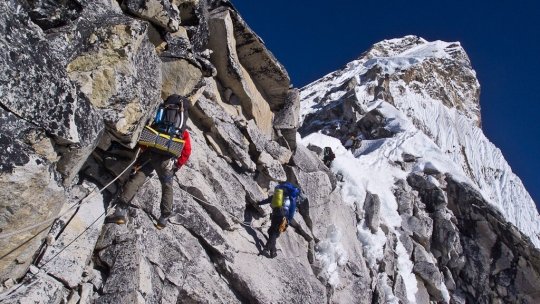
The AmaDablam Expedition is a journey that takes climbers through a variety of landscapes, from the lush forests of the lower elevations to the barren, icy peaks of the upper reaches. The expedition typically takes around 30 days and requires a high level of physical fitness and technical climbing skills.
The best time of year to climb Ama Dablam is during the autumn season, specifically from September to November. This period offers the most favorable conditions for climbing, with stable weather, clear skies, moderate temperatures, less snowfall, and good visibility.
The climb itself is considered to be one of the most challenging in the Himalayas, with steep, technical routes that require expert climbing skills. The final ascent to the summit is particularly challenging, with a narrow ridge and steep, icy slopes.
Despite the challenges, the AmaDablam Expedition is a once-in-a-lifetime experience that offers breathtaking views of the surrounding mountains and valleys. The climb is also a chance to experience the unique culture and traditions of the Sherpa people, who live in the region and have a long history of mountaineering.
Overall, the AmaDablam Expedition is a challenging and rewarding journey that offers a unique and unforgettable experience. Whether you are an experienced mountaineer or a beginner looking for a new challenge, the AmaDablam Expedition is a must-do adventure.
#AmaDablam#himalayas#adventuretravel#explorenepal#mountaineering#mountainviews#outdooradventure#adventure#himalayanexpedition#nepal
0 notes
Text
Trekking Through Majesty: The Kanchenjunga Circuit Short Trek
In the eastern reaches of Nepal lies a trekking route that offers a captivating journey through some of the most remote and pristine landscapes in the Himalayas: the Kanchenjunga Circuit Short Trek. This trekking adventure presents an opportunity for adventurers to immerse themselves in the rugged beauty of the Kanchenjunga region while experiencing the rich cultural heritage of the local communities.
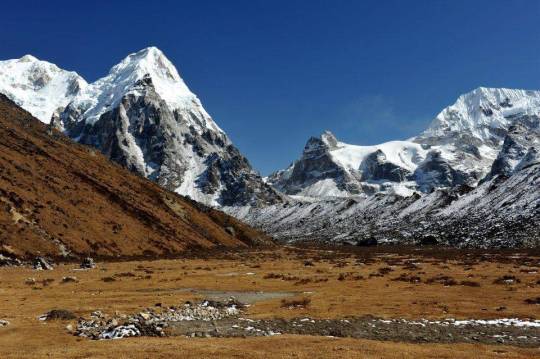
The Kanchenjunga Circuit Short Trek begins in the village of Taplejung, where trekkers are greeted with stunning views of the surrounding mountains and lush valleys. From there, the trek unfolds as trekkers traverse ancient trails that wind their way through dense forests, alpine meadows, and traditional villages.
As the trek progresses, trekkers will be treated to breathtaking views of the majestic peaks of the Kanchenjunga massif, including the world's third-highest peak, Kanchenjunga itself. The towering mountains dominate the landscape, their snow-capped peaks reaching towards the sky in a display of awe-inspiring grandeur.
One of the highlights of the Kanchenjunga Circuit Short Trek is the opportunity to visit the sacred monasteries and stupas that dot the landscape. These ancient religious sites are steeped in history and tradition, offering trekkers a glimpse into the spiritual life of the region and the beliefs of the local communities.
Throughout the trek, trekkers will have the chance to interact with the friendly inhabitants of the region, including the indigenous Rai and Limbu communities. These warm and welcoming people are known for their hospitality and generosity, and trekkers will often be invited into their homes to share a meal or a cup of tea.
As the trek comes to an end, trekkers will descend back to Taplejung, taking with them memories of stunning landscapes, warm hospitality, and the sense of accomplishment that comes from conquering the challenges of the trail. The Kanchenjunga Circuit Short Trek may be less well-known than other trekking routes in Nepal, but for those who embark on this journey, it offers an unforgettable adventure amidst the majestic beauty of the Himalayas.
In conclusion, the Kanchenjunga Circuit Short Trek is a hidden gem in the eastern reaches of Nepal, offering trekkers a chance to experience the rugged beauty and rich cultural heritage of the Kanchenjunga region. From panoramic mountain views to encounters with local communities, this trek is sure to leave a lasting impression on all who undertake it. So lace up your boots, pack your bags, and prepare for the adventure of a lifetime on the Kanchenjunga Circuit Short Trek.
#Kanchenjunga Circuit#Short Trek#trekkinglife#trekkingadventure#trekkinginnepal#adventure#mountainviews#adventuretravel#himalayas#mountaineering#outdooradventure#nepal#adventure time
0 notes
Text
Trekking in Nepal: A Journey Through the Himalayan Wonderland
Nepal, a country renowned for its majestic peaks and breathtaking landscapes, offers a trekking experience like no other. The diverse terrain, ranging from lush forests to rugged mountains, provides a challenging yet rewarding adventure for outdoor enthusiasts. As you traverse the winding trails, you will be greeted by stunning vistas of snow-capped peaks, cascading waterfalls, and picturesque villages.
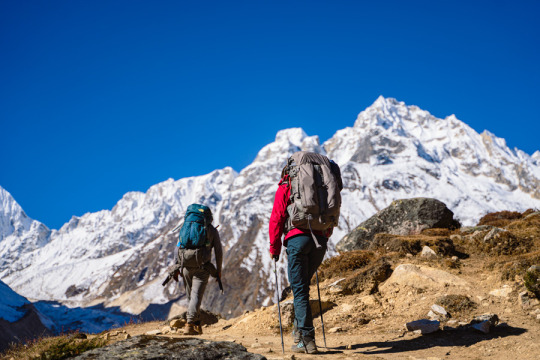
One of the most popular trekking routes in Nepal is the Annapurna Circuit, which takes you through a variety of landscapes, including terraced fields, rhododendron forests, and high mountain passes. This trek offers a glimpse into the traditional way of life in the Himalayan region, as you pass by remote villages and interact with friendly locals.
For those seeking a more challenging trek, the Everest Base Camp trek is a bucket-list adventure that takes you to the foot of the world's highest peak. The trail winds through the Khumbu region, offering panoramic views of Everest, Lhotse, and Nuptse. Along the way, you will stay in teahouses run by local Sherpa families, immersing yourself in their rich culture and hospitality.
Nepal is also home to the Langtang Valley trek, which is less crowded but equally rewarding. This trek takes you through pristine forests, alpine meadows, and traditional Tamang villages. The highlight of this trek is the stunning views of Langtang Lirung and other snow-capped peaks that dominate the skyline.
As you embark on your trekking adventure in Nepal, make sure to be well-prepared with proper gear, clothing, and acclimatization plans. Respect the local customs and environment by leaving no trace and supporting sustainable tourism practices. Whether you are a seasoned trekker or a novice adventurer, Nepal offers a unique experience that will leave you with memories to last a lifetime. So lace up your boots, pack your bags, and get ready for an unforgettable journey through the Himalayan wonderland of Nepal.
#trekkinginnepal#trekkingadventure#explorenepal#adventuretravel#adventure#himalayas#mountainviews#outdooradventure#climbing
0 notes
Text
Conquering Island Peak: A Thrilling Adventure in the Himalayas
Island Peak, also known as Imja Tse, stands tall at 6,189 meters in the heart of the Himalayas, offering a challenging yet rewarding climb for adventure enthusiasts. This majestic peak is a popular choice for climbers seeking to test their skills and experience the breathtaking beauty of the surrounding landscape.
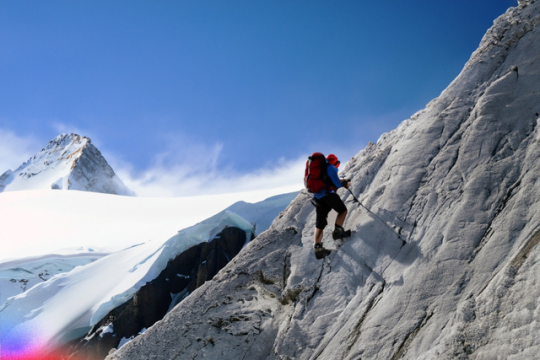
Island Peak Climbing is one of the most beautiful trekking and peak climbing centers in the Himalayas. Located in the Everest/Khumbu region of Eastern Nepal, Island Peak Climbing is perfect for you if you are an adventure lover and enthusiast of energetic and challenging treks.
The journey to Island Peak begins in the bustling town of Lukla, where trekkers start their trek towards the Everest region. As you make your way through picturesque villages and lush forests, the towering peak of Island Peak looms in the distance, beckoning you to conquer its summit.
The climb itself is a test of endurance and skill, requiring technical expertise in ice climbing and glacier travel. With proper acclimatization and guidance from experienced Sherpa guides, climbers can navigate through crevasses and steep ice walls to reach the summit.
Reaching the top of Island Peak is a moment of triumph, with panoramic views of Everest, Lhotse, and Makalu greeting you at the summit. The sense of accomplishment and awe at the beauty of the Himalayan range make all the effort and challenges worthwhile.
As you descend back to base camp, reflecting on your achievement, you carry with you memories that will last a lifetime. Island Peak may be a challenging climb, but it is an adventure that will leave you with a deep appreciation for the raw power and beauty of nature.
In conclusion, Island Peak offers a thrilling adventure for those seeking to push their limits and experience the grandeur of the Himalayas. With proper preparation and determination, conquering this peak can be a life-changing experience that will stay with you forever.
#nepal#islandpeak#mountains#climbing#adventure#himalayas#adventuretravel#explorenepal#mountaineering#mountainviews#nature
0 notes
Text
A Comprehensive Guide to the Langtang Valley Trek
The Langtang Valley Trek is a popular destination for adventure seekers and nature enthusiasts. Located in the Himalayan region of Nepal, this trek offers a unique blend of stunning mountain views, diverse landscapes, and rich cultural experiences.

The Langtang Valley Trek is a moderate to challenging trek that takes you through the Langtang National Park. The park is home to a variety of flora and fauna, including the elusive snow leopard and the red pandas. The trek starts from Syabrubesi, a small village located at an altitude of 1,550 meters. From here, you'll ascend to Kyanjin Gompa, the highest point of the trek, at an altitude of 3,870 meters.
The trek is divided into several stages, each offering its own unique experiences. The first stage takes you through the dense forests of oak and rhododendron, where you'll encounter a variety of birds and wildlife. The second stage takes you to the alpine meadows, where you'll be greeted by the stunning views of the Langtang mountain range.
The third stage of the trek takes you to the Langtang Valley, where you'll explore the traditional villages and get a glimpse into the local culture. Here, you'll have the opportunity to interact with the friendly locals and learn about their way of life.
The fourth stage of the trek takes you to Kyanjin Gompa, the highest point of the trek. From here, you'll have the opportunity to explore the surrounding area and take in the breathtaking views of the mountains.
The Langtang Valley Trek is a must-do for anyone looking to experience the beauty of the Himalayas and the rich culture of Nepal. With its stunning landscapes, diverse wildlife, and friendly locals, this trek offers something for everyone. So, pack your bags and embark on an adventure of a lifetime!
#LangtangValley#TrekkingAdventure#HimalayanBeauty#NatureTrail#TamangCulture#SherpaVillages#BuddhistMonastery#MountainViews#TserkoRi#SpiritualJourney#WildlifeSpotting#OutdoorAdventure#NepalTrekking#MountainMagic
0 notes
Text
Mardi Himal Trek
The allure of the Mardi Trek lies in its stunning landscapes and panoramic views. This trek offers a unique opportunity to witness the majestic peaks of the Annapurna and Machhapuchhre mountains. The journey through this region is a captivating experience that immerses trekkers in the natural grandeur of the Himalayas.
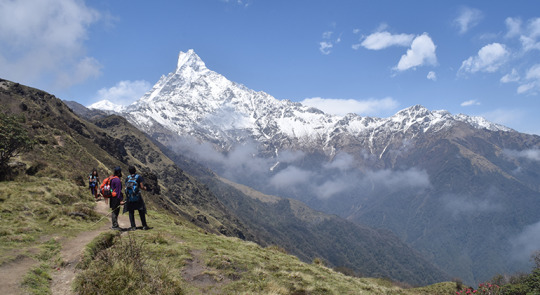
Mardi Himal Trek is the best-kept secret in the heart of the Annapurna region. Located eastwards of the classic ABC Trek, this adventure is one of the best short treks in the Himalayas of Nepal.
The Path Less Traveled
Unlike popular routes, the Mardi Trek offers a quieter and more authentic trekking experience. The trail winds through remote villages, rhododendron forests, and terraced fields, providing a glimpse into the traditional lifestyle of the local communities. This off-the-beaten-path adventure is perfect for those seeking solitude and a deeper connection with nature.
A Symphony of Nature
The trek unveils a symphony of natural wonders, from cascading waterfalls to snow-capped peaks. The changing landscapes offer a visual feast for trekkers, with each turn revealing a new vista to behold. The diverse flora and fauna along the trail create a vibrant tapestry of colors and textures.
Cultural Encounters
Beyond its natural splendor, the Mardi Trek offers cultural encounters that enrich the journey. Trekkers have the opportunity to interact with local villagers, learn about their traditions, and sample authentic Nepalese cuisine. These cultural exchanges add depth to the trek, fostering a deeper appreciation for the region's heritage.
A Test of Endurance
While the Mardi Trek is relatively moderate in difficulty, it presents its own challenges that test trekkers' endurance and resilience. The steep ascents, rocky paths, and high altitudes demand physical fitness and mental fortitude. Each day on this trek is an opportunity to push personal limits and embrace the spirit of adventure.
Conclusion
In conclusion, the Mardi Trek is a hidden gem in the heart of the Annapurna region, waiting to be discovered by nature enthusiasts and adventure seekers. This expedition offers a perfect blend of natural beauty, cultural richness, and personal growth. Embarking on this journey is not just about reaching new heights but also about experiencing the transformative power of mountain landscapes. This blog captures the essence of the Mardi Trek without using the specified words.
#MardiHimalTrek#Nepal#Trekking#Himalayas#MountainAdventure#AdventureTravel#TrekkingInNepal#ExploreNepal#Nature#Hiking#OutdoorAdventure#TrekkingLife#ScenicViews#MountainLovers#TravelNepal#HimalayanBeauty#MardiHimal#AnnapurnaRegion#MountainTrails#HimalayanExperience
0 notes
Text
Conquering the Heights of Pisang Peak: A Journey of Endurance
Pisang Peak, towering at an elevation of 6,091 meters, is a formidable mountain nestled in the Manang District of the Nepal Himalayas. This blog recounts our challenging expedition to conquer the summit of Pisang Peak, a test of physical and mental fortitude amidst the awe-inspiring Himalayan landscape.

Pisang Peak Climbing is one of the best trekking destinations in the Annapurna Region of Nepal. The peak towers above the small village of Pisang and measures 6091 meters in height.
Day 1: Arrival and Acclimatization
Our journey commenced with a flight from Kathmandu to Pokhara, followed by a scenic drive to Besisahar, the starting point of our trek. The initial day was dedicated to acclimatization, allowing us to adjust to the altitude and immerse ourselves in the rugged terrain. We spent the night at a local lodge in Besisahar, soaking in the tranquility of the surroundings.
Day 2-4: Trek to Pisang Peak Base Camp
The subsequent days were filled with arduous trekking through the captivating Annapurna region. Traversing suspension bridges and meandering along the Marsyangdi River, we journeyed through traditional Nepalese villages, each step bringing us closer to our goal. Despite the challenges, the panoramic vistas of snow-capped peaks and verdant valleys fueled our spirits.
On the fourth day, we reached the Pisang Peak Base Camp situated at an altitude of 4,380 meters. This camp served as our sanctuary as we readied ourselves for the impending ascent. Here, we rested, nourished our bodies with wholesome meals, and acclimatized to the high altitude conditions.
Day 5-7: Scaling Pisang Peak
The climb to Pisang Peak's summit tested our physical and mental resilience. Setting off early in the morning equipped with climbing gear and provisions, we tackled steep inclines and rocky terrain, relying on ropes and crampons for support.
As we ascended higher, the vistas grew more spectacular. The Himalayan panorama unfolded before us, revealing majestic peaks like Annapurna II and IV against a backdrop of unparalleled beauty. Though demanding, reaching the summit filled us with an unparalleled sense of achievement.
Day 8-10: Descent and Reflection
Following a brief sojourn at the summit, we commenced our descent. Navigating challenging terrain on our return journey was equally demanding but rewarding. Reaching back to base camp marked a moment of triumph and reflection on our accomplishments.
The subsequent day saw us retracing our steps back to Besisahar. The descent felt smoother as our bodies had acclimatized to the altitude. As we concluded our expedition and reminisced on our journey's challenges and triumphs, we were reminded of the resilience and camaraderie that defined this unforgettable experience.
Conclusion:
Conquering Pisang Peak was not merely about scaling heights but a testament to human endurance and determination amidst nature's grandeur. The journey instilled in us lessons of perseverance, teamwork, and the sheer joy of overcoming obstacles in pursuit of a shared goal.
#PisangPeak#Nepal#Himalayas#Climbing#Mountaineering#Adventure#Trekking#PeakClimbing#Expedition#HighAltitude#MountainLife#ExploreNepal#AdventureTravel#Summit#Hiking#Nature#OutdoorAdventure#Mountaineers#AlpineAscents#HimalayanExpedition#TravelNepal#PeakBagging#MountainViews
0 notes
Text
Baruntse Expedition: A Himalayan Adventure
The Baruntse Expedition offers a thrilling and challenging climb to one of the less technical 7000m peaks in the Himalayas, located in Nepal. Here is an overview of this exciting adventure based on the information gathered from various sources.

Expedition Highlights
Peak Details: Baruntse stands at 7129 meters and offers a unique climbing experience.
Itinerary: The expedition typically spans 35 days and includes climbing Baruntse and Mera Peak (6476m).
Guide Ratio: The expedition maintains a 1:1 guide-to-climber ratio during the summit climb and a 1:2 ratio on Mera Peak.
Route: The South-East Ridge route is recommended for its accessibility, with two camps set up along the way.
Base Camp Comfort: The base camp at 5460m provides heated dining tents and single-person tents for comfort.
Return: After the expedition, participants often return via helicopter for convenience.
Climbing Details
Route Options: While the South-East Ridge is known for its steep ice sections, the South Ridge is more popular for its accessibility.
Camps: Camp 1 is situated at 6100m, followed by Camp 2 at 6420m on the South-East Ridge.
History: Baruntse was first climbed in 1954 via the south ridge by a New Zealand expedition led by Sir Edmund Hillary.
Environmental Responsibility
Impact Awareness: Acknowledging the environmental impact, efforts are made to minimize pollution and waste at the base camp.
Initiative: Starting from the 2023 expedition season, a $50 contribution from each booking will be allocated to address environmental concerns.
Logistics and Strategy
Best Time: The ideal time for the Baruntse Expedition is typically October to November (Autumn).
Climbing Strategy: Fixed rope lines are set up by a rope-fixing team along the standard route of the South-East Ridge.
The Baruntse Expedition promises not only an exhilarating climb but also a commitment to environmental sustainability. With its rich history, challenging routes, and stunning landscapes, this adventure beckons climbers seeking both thrill and responsibility in their Himalayan pursuits.
#BaruntseExpedition#MountainClimbing#Himalayas#Mountaineering#Adventure#ExpeditionLife#PeakClimbing#AltitudeLife#SummitBid#HighAltitudeAdventure#NepalAdventure#MountaineeringExpedition#PeakBagging#ExtremeAdventure#AlpineClimbing
0 notes